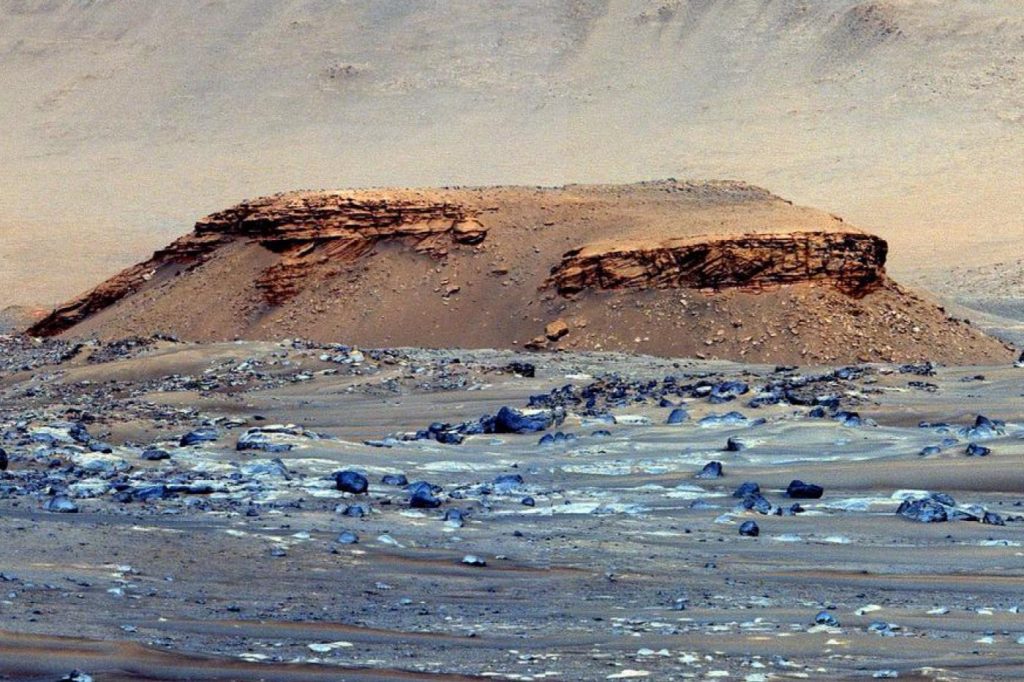
Perseverance just answered a crucial question about Mars
Researchers have been thinking about it for a long time, and it’s now official: Perseverance actually landed in an ancient Martian lake.
The perseverance that has roamed Mars since last February has never ceased to flood us with great images. And after three months of assembly, the machine collected a real little treasure. According to NASA teams, These photos are definitive proof that the rover in an ancient lake!
It’s been a long time since we suspected that Jezero hole – Place of landing of the rover – It should be an old water body. That’s even one of the reasons NASA chose to deposit Perseverance there. And so the US space agency had hoped to be able to confirm this hypothesis, and it has now been done.
From space, the Mars Reconnaissance Orbiter and other spacecraft have given us tantalizing hints about Jezero Crater’s watery past. Now that it’s a file Tweet embed The rover offers close-ups of Earth, and scientists have encountered some geological surprises: https://t.co/9tXmiFNsDS pic.twitter.com/ern4PqRkV6
– NASA Mars October 7, 2021
Works published in the magazine Science It is based on the study of an area that has already intrigued researchers for some time. In fact, the latter has a special appearance, in the form of a fan. This reminds us of Delta that can be found on Earth. determination So he left to conduct his investigation in this field, and produced several images of geological layers invisible from orbit.
Lake, river and torrential floods
By analyzing the images, the researchers noticed that the layered structure of the rocks fully matches their expectations. On Earth, this type of structure is formed through a process sedimentation. A phenomenon that researchers have found here on Mars.
The images were of such high quality that NASA was able to analyze the different layers in detail. Based on their orientation and thickness, researchers from the US agency concluded that this substance can only be deposited by moving fluid. This indicates that the crater was at some point in its history A calm lake fed by a small river.
But their conclusions do not end there. They also spotted large boulders in the upper layers. The discovery is not trivial. This means that they were deposited recently (all things considered) in the geological history of Mars. But due to its size and weight, it was definitely not affected by a simple river. According to researchers, this presence attests to an episode massive floodthat happened in record time.
Geologically and biologically safe
For scientists, the presence of water in the crater in the past is great news in many ways. In the first place, they will now be able to Go back to the source From these floods, and thus learn more about the climatology, hydrology and geology of Mars. Even better: this water could have served as a substrate for a life form. So it will be interesting to go upstream in search of traces of a past life.
This is just as true on Earth, these structures, already very useful in their own right, often contain fossils sandwiched between two layers of sediment. those bumps Therefore they are real safes. It contains some of the geological history and biological history of the Red Planet. It remains only to explore its content; A long-running, yet infinitely exciting adventure. “It will take time to find the rocks as we hope to find the signs of life‘,” concludes Benjamin Weiss, a planetary science researcher at the Massachusetts Institute of Technology.It’s a marathon, but with a lot of potential.Study text available Here.

“Incurable web evangelist. Hipster-friendly gamer. Award-winning entrepreneur. Falls down a lot.”




